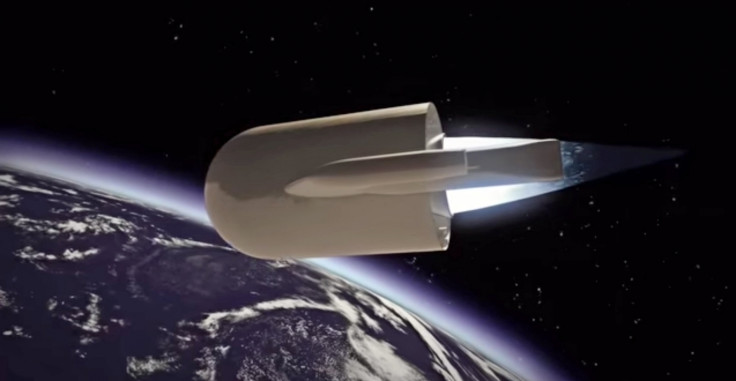Airbus challenging SpaceX with a reusable space launcher that sprouts wings and flies home

French aerospace manufacturer Airbus is currently testing out a space launcher system that is partially reusable and can return to Earth and fly safely back to its home as an unmanned aerial vehicle (UAV).
Airbus's Space and Defence division has invented the Advanced Expendable Launcher with Innovative Engine Economy (Adeline) system, which aims to reuse the most costly parts to save up to 80% of the cost of the space launcher.
Adeline is designed to be compatible with the next-generation Ariane 6 rocket that is now being built by the European Space Agency.
Once the rocket clears the Earth's atmosphere and the rocket launcher detaches, rather than just losing the whole thing to outer space, the lower half of the launch system containing the propulsion systems and avionics will re-enter the Earth's atmosphere.
A heat shield will protect the whole system from being damaged on re-entry to the atmosphere, and Adeline will then spread short wings and use its own aero engines to allow it to fly and land back at its headquarters on a conventional runway.
Trying to reuse expensive space launching equipment
SpaceX is already working on reusable rockets with its numerous attempts to land rocket launchers once missions have been successfully sent to space – its most recent attempt was to land the launcher of the Falcon 9, which tipped over while landing onto a floating "drone ship".
The Boeing and Lockheed Martin joint venture United Launch Alliance is also working on a way for rocket engines to re-enter the Earth's atmosphere and be captured in mid-flight by helicopters, to go on Nasa's new Vulcan Next Generation Launch System (NGLS).
Airbus claims that one Adeline rocket launcher could be used between eight to 10 times and will be ready to be used regularly in 2025, following a maiden test flight with the Ariane 6 in 2020 without any recoverable components.
"The current design for Ariane 6 is fixed. For its maiden flight in 2020, it will not change," said Francois Auque, the head of space systems at Airbus Defence and Space.
"But it is absolutely normal that in parallel we begin to think about what will be the evolution of Ariane 6, because if we don't already pave the way for those evolutions we will not be in a position to implement them somewhere between 2025 and 2030."
Using a 'space tug' to refuel in orbit instead
Airbus also wants to reduce the size of a satellite rocket launcher. Rather than the satellite having to carry fuel, instead a "space tug" containing fuel and powered by electrical propulsion will stay in a parking orbit, and once the satellite payload and the upper stage of the rocket launcher detach from the launcher, it could connect to the space tug.
Once connected, the satellite payload will receive the fuel it needs, and then rather than rockets in the upper stage firing to get the satellite to the spot it is meant to go to, the space tug will take care of that.
The space tug could also be used to repair and upgrade satellites, and having it up there would mean rocket launchers would require a lot less fuel and could be smaller and lighter.
© Copyright IBTimes 2025. All rights reserved.






















